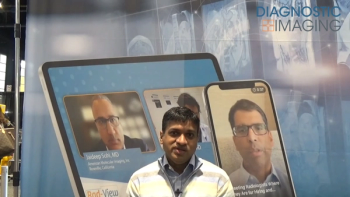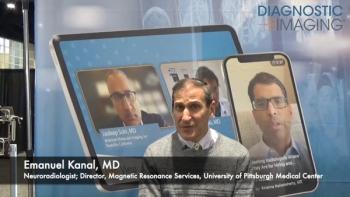
Targeted MR/US Biopsies Detect More High-Risk Prostate Cancer
Targeted biopsies using MRI and ultrasound detect more high-risk prostate cancer.
Targeted MR/ultrasound fusion biopsy is associated with increased detection of high-risk prostate cancer and decreased detection of low-risk prostate cancer, compared with standard extended-sextant US-guided biopsy, according to an article published in
Researchers from the National Institutes of Health performed a prospective cohort study to assess targeted biopsy, standard biopsy, and the two combined for the diagnosis of intermediate- to high-risk prostate cancer.
A total of 1,003 men, mean age 62.1, undergoing both targeted and standard biopsy participated in the seven-year trial. The patients had been referred after they were found to have elevated prostate-specific antigen (PSA) levels or abnormal digital rectal examination results.
The results showed that 461 prostate cancer cases were diagnosed with targeted biopsy compared with 469 cases with standard biopsy. Targeted and standard biopsies produced the same results in 69% of the cases, however 30% more high-risk cancers were diagnosed through targeted biopsy than standard biopsy (173 versus 122 cases) and 17% fewer low-risk cancers (213 versus 258). Adding standard biopsy to targeted biopsy led to a 22 percent increase in cancer diagnoses, the vast majority of them for low-risk cancers.[[{"type":"media","view_mode":"media_crop","fid":"31416","attributes":{"alt":"Mohammad Minhaj Siddiqui, MD","class":"media-image media-image-right","id":"media_crop_4346490155326","media_crop_h":"0","media_crop_image_style":"-1","media_crop_instance":"3311","media_crop_rotate":"0","media_crop_scale_h":"0","media_crop_scale_w":"0","media_crop_w":"0","media_crop_x":"0","media_crop_y":"0","style":"border-width: 0px; border-style: solid; margin: 1px; float: right; height: 192px; width: 160px;","title":"Mohammad Minhaj Siddiqui, MD","typeof":"foaf:Image"}}]]
Using targeted biopsy, doctors are able to pinpoint and test suspicious areas because MRIs of the suspected cancer are fused with real-time ultrasound images, creating a map of the prostate. In a standard biopsy, doctors use ultrasound guidance to take multiple random tissue samples from throughout the gland.
Targeted biopsy was also better able to predict whether the disease was low- or intermediate-risk than standard biopsy or the two approaches combined.
"This study demonstrates that targeted fusion-guided biopsy could significantly enhance our ability to identify patients with high-risk prostate cancers that need more aggressive treatment," lead author Mohammad Minhaj Siddiqui, MD, said in a release. Siddiqui was a fellow at NIH when the study was conducted and is now assistant professor of surgery at the University of Maryland School of Medicine and director of urologic robotic surgery at the University of Maryland Marlene and Stewart Greenebaum Cancer Center.
The researchers concluded that the targeted biopsy was better than the standard biopsy in detecting high-risk prostate cancer and lower detection of low-risk prostate cancer.
Newsletter
Stay at the forefront of radiology with the Diagnostic Imaging newsletter, delivering the latest news, clinical insights, and imaging advancements for today’s radiologists.



























